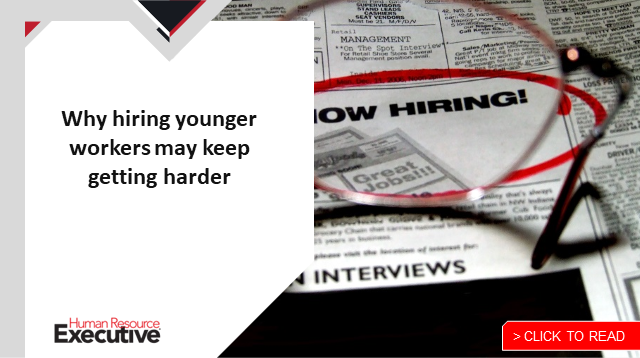Shortly after the COVID-19 pandemic began, it seemed everyone was talking about the “Great Resignation,” almost with the sense that people were quitting their jobs just because they no longer wanted to work. While that may have been true for some, the majority were leaving the workforce to take care of children or aging family members—or because they had finally realized they wanted, and deserved, something different from their employers. It’s clear, particularly in the midst of soaring inflation, that people need and want to work. But they are no longer willing to settle for simply a paycheck.
Between the Great Resignation and the aging workforce—Boomers (who are nearing, at or past retirement age) make up 25% of the labor market—nearly every industry is facing labor shortages. This has given workers the leg up and pushed us into the Great Renegotiation. If organizations want to win the war on talent, HR leaders need to start thinking differently about their hiring and retention strategies, while also differentiating themselves in an increasingly complex market. The strategies outlined below provide additional context and considerations for navigating today’s talent environment.
Balance head and heart by acknowledging what employees care most about
We all have access to a seemingly endless amount of data related to the current labor market and the latest workplace trends. This data could easily be used to “logic” your way into a hiring and retention strategy. While data is a useful piece of the puzzle, it’s not nearly enough on its own in today’s environment.
 Leaders need to empathize with employees’ needs and challenges beyond just the ones inherent in day-to-day job responsibilities. Many workers are still grappling with unpredictable childcare. Some are clamoring to get back into the office, while others want to work remotely forever. Nearly all workers are craving some level of flexibility.
Leaders need to empathize with employees’ needs and challenges beyond just the ones inherent in day-to-day job responsibilities. Many workers are still grappling with unpredictable childcare. Some are clamoring to get back into the office, while others want to work remotely forever. Nearly all workers are craving some level of flexibility.
In addition to the specific needs that come with an evolving COVID-19 world, it’s also critical to acknowledge the unique desires of millennials (who make up 35% of today’s workforce, and many of whom are moving into formal leadership roles). This generation wants to work for organizations that are purpose-driven and offer intentional development and mentoring opportunities. Recognizing what employees most care about and creating strategies that specifically address these needs will set your company apart.
Weather the storm by fostering leadership from all levels
In today’s complex, volatile and uncertain world, it feels like we are weathering a new storm every day—from economic uncertainty to supply chain shortages and technological advances. To keep up, it’s becoming a non-negotiable to ensure you have people at all levels and across all functions consistently looking for and acting on opportunities. Create mechanisms for those closest to the work to identify challenges and experiment with creative solutions to solve those challenges. Not only is this beneficial for the bottom line, because you have many more people ready to react to market demands but creating space for leadership from more people increases employee engagement and commitment. No one wants to feel like a cog in a wheel; they want to know they are part of something and can meaningfully contribute.
Focus on building an adaptable culture
It would be great if we could look five years out (or even one year out!) and predict with certainty which trends are coming down the pike. But that’s just not the reality anymore. The only thing we can confidently predict is more disruption and continued change. The workforce is well aware of this, and they are looking for organizations that can effectively respond to whatever the next disruption is. One of the most critical things HR leaders can do right now is to invest in building an adaptable culture across their teams and organizations—cultures that intentionally focus on all stakeholders (not just shareholders), have high trust, foster appropriate risk-taking, are proactive rather than reactive, are receptive to innovation and change, consider both short- and long-term results and encourage cooperative problem-solving. Creating an adaptable culture is what will prepare you to handle the challenges of today and the challenges of tomorrow.
Today’s labor market is incredibly complex and has created a host of challenges for businesses across the globe. But these shifting dynamics have also created unique opportunities for organizations to reimagine their talent strategies and differentiate themselves from their competition. The workforce is ready to bring their best—they expect the same from their employers, and it’s time we deliver.
The post 3 ways HR leaders can adapt to today’s talent market appeared first on HR Executive.